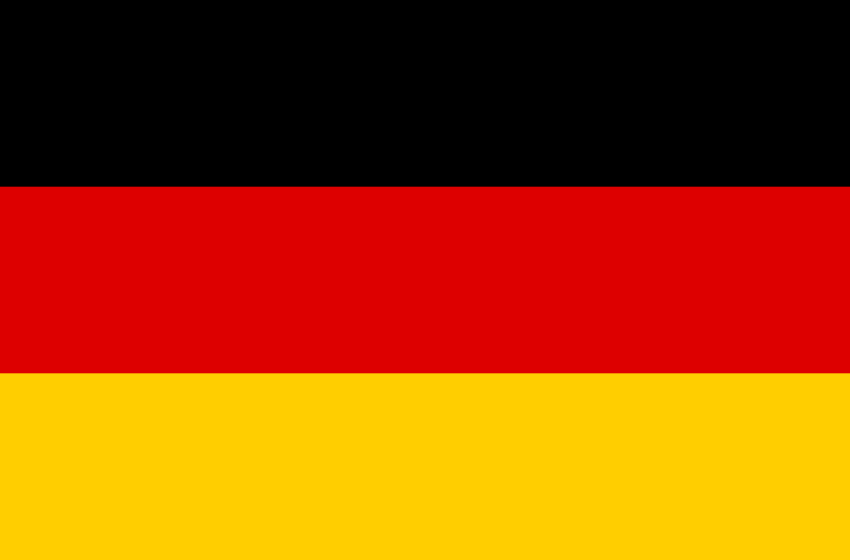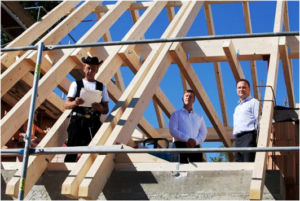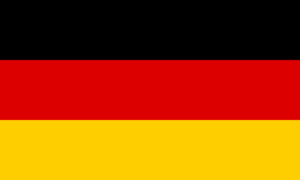Germany: Solar House Trend towards Multi-Family Buildings
December 15, 2013
2013 will have been the first year in which the Sonnenhaus-Institut (Solar House Institute) has felt the effects of the general downward trend in the solar thermal market. According to a press release, the knowledge platform’s 14% increase in buildings in 2013 (176 new houses) marks a notable drop from previous years. The 250 solar houses built in 2012 still represented a growth rate of 20%. This is why the participants of the general assembly at the end of November rather looked to the future than to the past: There are already plans to set up around 300 mainly solar-heated houses in 2014. The association relies on data from its members to determine the number of newly built solar houses. This year, only 40 of these members sent back the questionnaire, instead of the usual 60 to 80.
“The past year has unsettled the solar thermal industry in more than one respect,” Peter Rubeck, Managing Director of the Solar House Institute, explains. “During the entire debate about how to transform the energy sector, especially with regards to the surcharge from the feed-in tariff, no notable distinction was made between solar electricity on the one hand and solar thermal on the other. Whenever the discussion turns to solar, negative opinions always refer to all types of solar energy.” Rubeck believes that the general election and the zigzag course in energy transformation policy will deter future building owners from considering renewable system designs.
In light of the fact that around 87% of the energy in private households is used for warm water and heating, the Solar House Institute has been calling for heating system designs to be incorporated into the policies aimed at restructuring the energy sector. As part of the idea, the solar thermal experts want the government to remove administrative barriers which prevent solar-heated houses from being built. Many regions have set ambitious energy targets until 2020. “But looking at the development plans will already tell you that [the regions] will not be able to achieve these targets,” Rubeck says. “The buildings’ orientations and roof pitches alone make solar the wrong choice if you want to use energy effectively.” In addition, the subsidy schemes should be merged to make subsidy policy more transparent, and the Market Rebate Programme for Renewable Energies, MAP, should include a provision to promote the construction of highly efficient solar-powered buildings.
This year’s report from the Solar House Institute confirmed a development which had already become apparent over the last years: the trend towards multi-family buildings. Houses with more than three flats made up altogether one third of the solar-heated houses that were built this year. The share over the last years was around 13%. The construction and heating design by the Solar House Institute offers many advantages to owners of solar-heated buildings. For example, landlords – now independent of rising fossil fuel prices – can guarantee stable heating costs for years to come.
The Solar House Institute, which is located in Straubing, was founded in 2004 by architects and engineers from the solar industry and has grown into a professional network of more than 320 members. The association’s aims are to develop and spread the use of its construction and heating design for buildings primarily heated by solar energy and to turn the Institute into a comprehensive knowledge platform. From 2004 until today, developers built 1,500 houses according the criteria of the platform. These criteria include a transmission heat loss of no more than 0.28 W/m²K (new building) or 0.40 W/m²K (existing structure). The primary energy demand is not to be greater than 15 kWh/m²a and the solar coverage must be at least 50%. The backup heating source for the buffer tank has to be powered by a renewable source, too, for example, by a wood pellet boiler. The distinct characteristics of solar house architecture are a steeply pitched solar roof facing southward and a large water tank integrated into the living area.
More information:
http://www.sonnenhaus-institut.de


